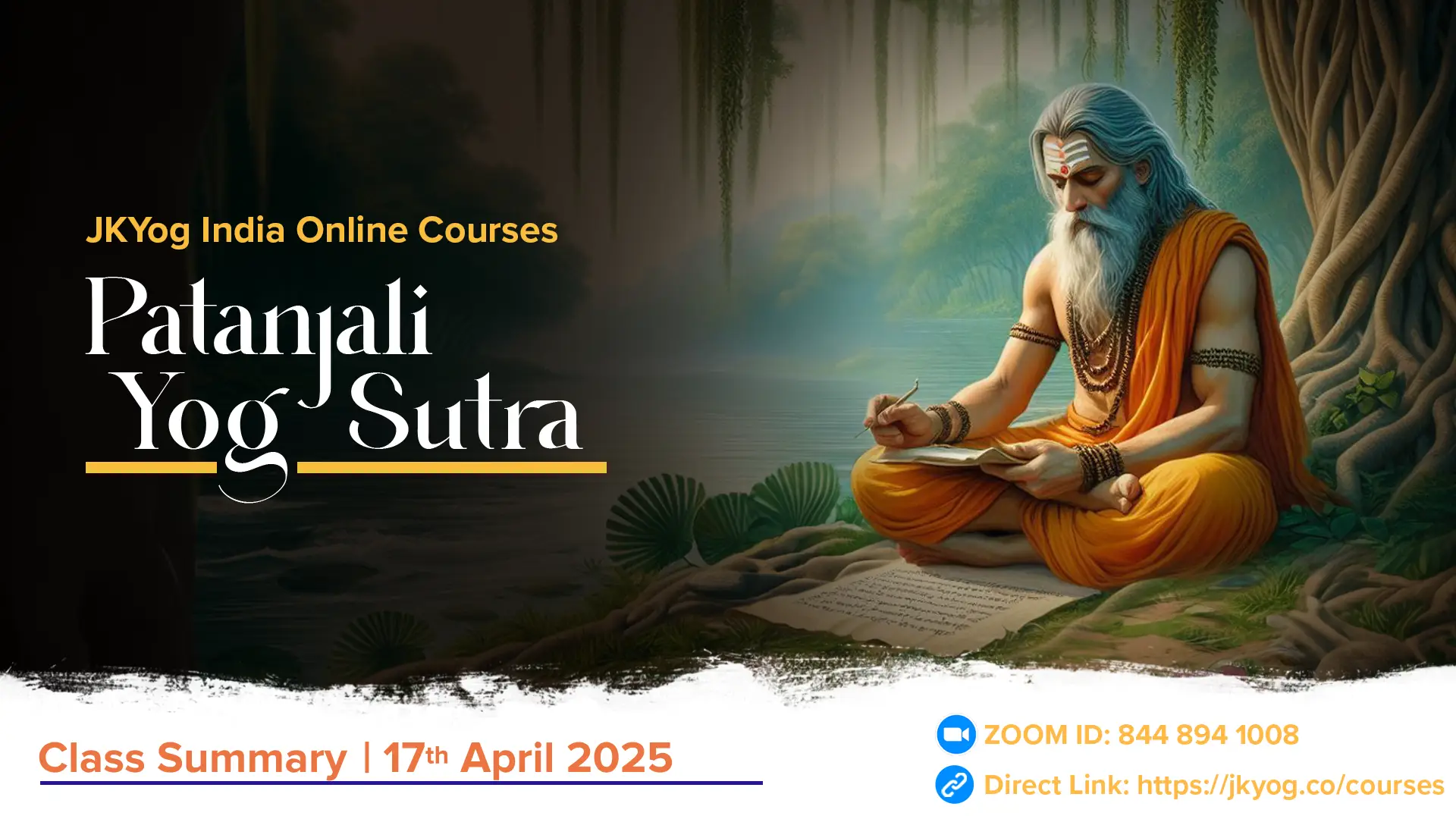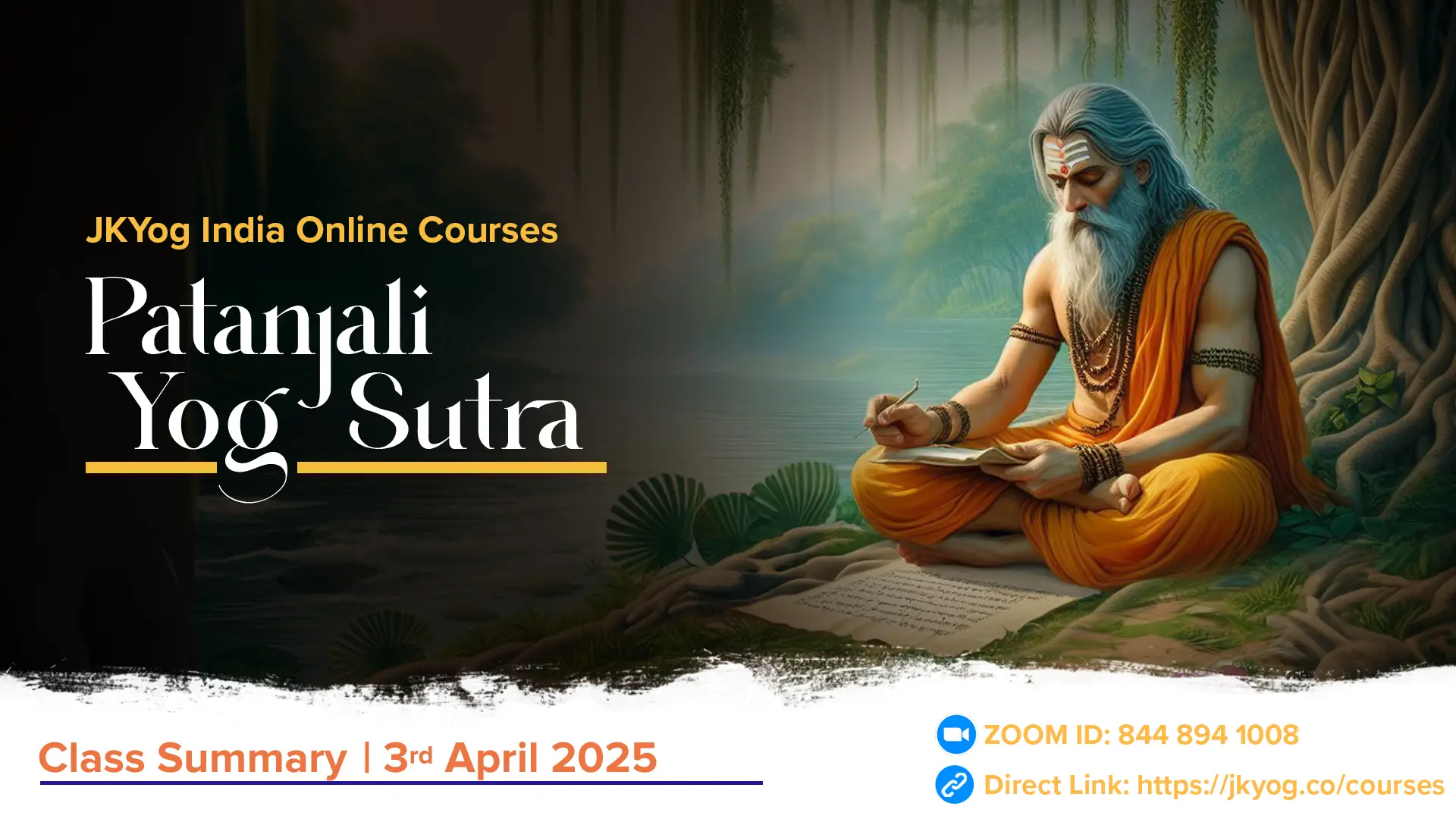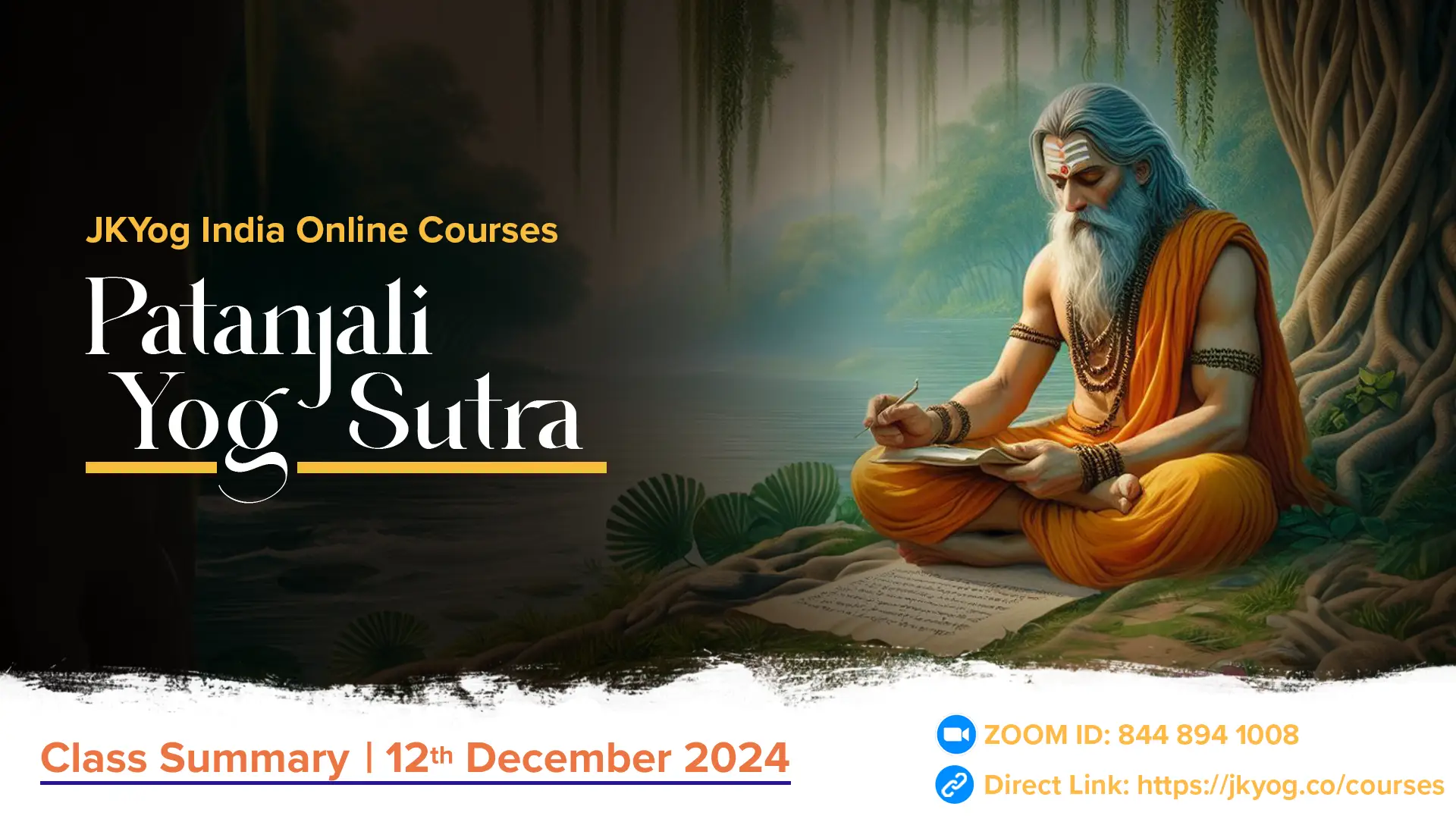ततः पुनः शान्तोदितौ तुल्यप्रत्ययौ चित्तस्यैकाग्रता परिणामः || 3.12 ||
tataḥ-punaḥśāntoditau-tulyapratyayau cittasyaikāgratā
pariṇāmaḥ || 3.12 ||
Translation:
Single-minded transformation is one in which, that which has disappeared, and that which is coming in, have similar content of the mind.
Ekāgratā pariṇāma has application in bhakti.
We saw in the previous sūtra that the distracting worldly thoughts have to be eschewed and that single-minded attention on one object is to be resorted to. If the outgoing thought and the object for the single-minded attention are of similar content of the mind, then the ekāgratā pariṇāma occurs.
For example, if the outgoing thought is on devotional stories connected with God and the focus in the next immediate stage is also on God himself then there arises single-minded transformation. Thus ekāgratā pariṇāma has application in bhakti.
We have seen three types of transformations in the last three sūtras. Whatever be the transformation, ultimately the meditation or contemplation one does is the most important one.
Thomas Merton has this to say on contemplation. “Contemplation is the highest expression of man’s intellectual and spiritual life. It is that life itself, fully awake, fully active, fully aware that it is alive. It is a spiritual wonder. It is spontaneous awe at the sacredness of life, of being. It is gratitude for life, for awareness and for being.”
We discussed how devotees attain Ekagrata Parinama through Bhakti (devotional practice). The same point was studied with reference to Bhagavad Gita and other scriptures.
Let us continue our study of Vibhuti pada in our upcoming classes.
Summary: JKYog India Online Class- Patanjali Yog Sutra [English]- 21.2.2025








